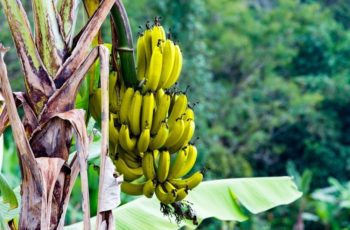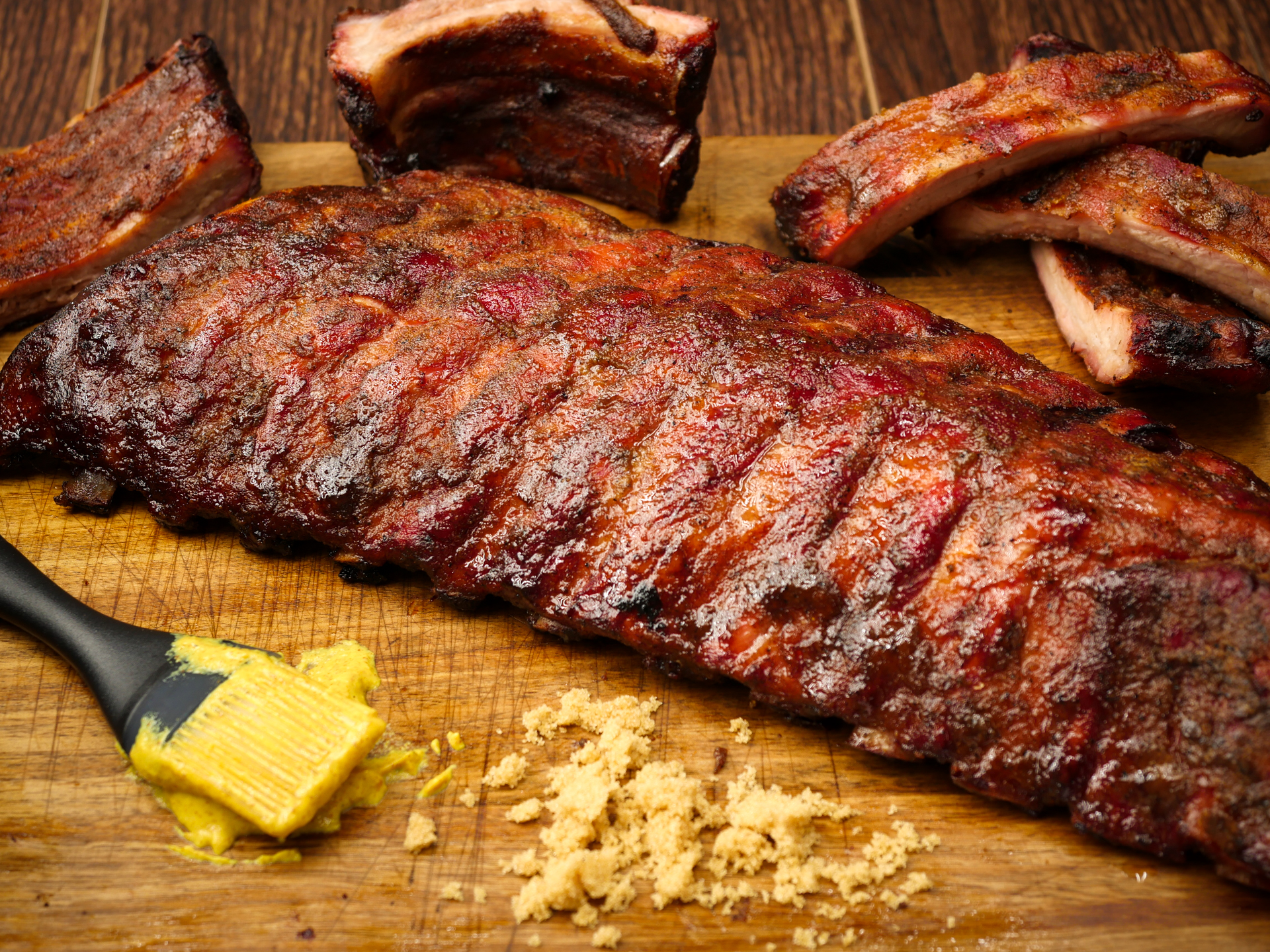
Bananas are one of the most popular fruits in the world and for good reason. They’re delicious, nutritious, and easy to eat. But what about wild bananas? Are they edible? And if so, how do they taste? In this blog post, we’ll take a closer look at wild bananas and explore whether or not they’re safe to eat. Stay tuned!

Are wild bananas edible?
Yes, wild bananas are edible. However, it is important to note that they have a huge number of pea-sized and stone-like hard seeds in them.
Wild bananas may taste good, but eating them is not a smooth affair as it is in the case of regular bananas. There are so many seeds, and they are hard and chewy.
You need to be careful while eating wild bananas as there is a good chance you might hurt your teeth.
How to eat wild bananas?
The best way to eat wild bananas is to remove the seeds first. You can do this by cutting the banana open and spooning out the seeds. Once the seeds are removed, you can eat the banana like you would a regular banana. If you want, you can also cook or bake with wild bananas. Wild bananas can be used in smoothies, pies, and other desserts. They can also be added to savory dishes such as curries and stews.
Nutritional facts of wild bananas:
Wild bananas are an excellent source of dietary fiber, vitamins A, C, and B6, as well as potassium and magnesium. One cup of mashed wild bananas contains:
- Calories: 107
- Fat: 0.3 grams
- Protein: 1.3 grams
- Carbs: 27 grams
- Fiber: 3.1 grams
- Vitamin A: 9% of the Daily Value (DV)
- Vitamin C: 34% of the DV
- Vitamin B6: 12% of the DV
- Potassium: 10% of the DV Magnesium: 8% of the DV
Health benefits of eating wild bananas :
Wild Bananas can help with weight loss
The fiber in wild bananas can help you feel full and promote weight loss. In one study, people who ate a high-fiber diet lost more weight and body fat than those who ate a low-fiber diet.
Wild bananas can improve heart health
The potassium in wild bananas can help lower blood pressure by relaxing the walls of your blood vessels. This can reduce your risk of strokes and heart attacks. Wild bananas are also a good source of magnesium, which is another mineral that’s important for heart health.
Wild bananas can aid digestion
The dietary fiber in wild bananas can help relieve constipation and promote regularity. Fiber also promotes the growth of healthy bacteria in the gut.
Wild bananas can boost immune function
The vitamin C in wild bananas can help increase your immunity and protect you from infections.
What do wild bananas taste like?
Wild bananas have a more bitter taste than store-bought bananas. They are also smaller and have thicker skin. Despite their difference in taste and appearance, wild bananas are still a nutritious food source. In fact, they contain more vitamins and minerals than store-bought bananas.
Seedless wild bananas:
If you don’t want to deal with the seeds in wild bananas, you can try to find seedless varieties. Seedless wild bananas are rare, but they do exist. One variety is the Musa Acuminata, which is also known as the “true wild banana.” This type of banana is native to Southeast Asia and Australia. It has yellow skin and white flesh that is dotted with black seeds. Another variety of seedless wild bananas is the Musa Baalbisiana. This type of banana is native to India and Bangladesh. It has a greenish-yellow skin and white flesh that is flecked with black seeds.

Recipes with wild bananas:
- Banana Bread: This banana bread recipe is made with whole wheat flour, making it a healthier option.
- Banana Pancakes: These pancakes are fluffy and delicious, and they can be made with either regular or wild bananas.
- Banana Curry: This curry uses wild bananas as one of the main ingredients. It is a flavorful and hearty dish that is perfect for cold weather.
- Banana Ice Cream: This ice cream is made with just three ingredients- bananas, milk, and honey. It is a healthy and refreshing treat.
- Banana Smoothie: This smoothie is made with wild bananas, yogurt, and milk. It is a quick and easy breakfast or snack option.
Domestication of bananas :
Bananas can be domesticated from two wild species known as Musa balbisiana and Musa acuminata for regular cultivation. Musa balbisiana is the parent of the plantain, and Musa acuminata is the parent of today’s sweet banana.
Bananas were first domesticated in Southeast Asia and later brought them to Africa and South America by traders and explorers. Bananas are now grown in many tropical countries around the world.
The cultivation of bananas is a labor-intensive process. The plants need to be carefully watered and fertilized, and the fruits need to be harvested by hand.
Bananas are a popular food all over the world, and they are used in many different dishes. They can be eaten fresh, cooked, or baked. Bananas are also a common ingredient in smoothies and desserts.
Do wild bananas have seeds?
Yes, wild bananas have seeds. However, there are also seedless varieties of wild bananas. One variety is the Musa Acuminata, which is also known as the “true wild banana.” This type of banana is native to Southeast Asia and Australia. It has yellow skin and white flesh that is dotted with black seeds. Another variety of seedless wild bananas is the Musa Baalbisiana. This type of banana is native to India and Bangladesh. It has a greenish-yellow skin and white flesh that is flecked with black seeds.
Can you eat banana seeds?
Yes, you can eat banana seeds. Banana seeds are a good source of fiber, protein, and vitamins. However, they are also very hard and difficult to chew. This is why it is important to grind them up before eating them. You can add banana seeds to smoothies or add them to baked goods.
Do wild bananas have the same nutritional value as store-bought bananas?
Yes, wild bananas have the same nutritional value as store-bought bananas. They are both a good source of dietary fiber, vitamin C, potassium, and magnesium. Wild bananas also contain more antioxidants than store-bought bananas.

Can you grow seeded bananas at home?
Yes, you can grow seeded bananas at home. However, it is important to note that bananas grown from seed will not be identical to the bananas that you buy at the store. Bananas grown from seed will be smaller and less sweet than store-bought bananas.
If you want to grow bananas at home, you can start by growing a plantain tree. Plantains are a type of banana that is commonly used in cooking. They are also easier to grow from seed than regular bananas.
To grow a plantain tree, you will need to purchase a plantain tree seedling from a nursery or online retailer. Once you have your seedling, plant it in a pot or in the ground in an area that gets full sun. Water your plantain tree regularly, and fertilize it with a balanced fertilizer every few months. Your plantain tree will take about two years to mature and produce fruit.
Once your plantain tree has produced fruit, you can harvest the bananas and use them in recipes. You can also allow the bananas to ripen on the tree and eat them fresh.
Fun facts about wild bananas:
– Wild bananas are a good source of dietary fiber, vitamin C, potassium, and magnesium.
– Wild bananas contain more antioxidants than store-bought bananas.
– You can grow seeded bananas at home.
– Plantains are a type of banana that is commonly used in cooking.
– Your plantain tree will take about two years to mature and produce fruit.
FAQs
Are wild bananas GMO?
No, wild bananas are not GMO. There are no genetically modified varieties of wild bananas.
Do wild bananas have pesticides?
Pesticides are not typically used on wild bananas. However, some farmers may use pesticides on their crops if there is a problem with pests or diseases.
What is the difference between plantain and a banana?
The main difference between plantain and a banana is that plantains are cooked before they are eaten, while bananas can be eaten raw. Plantains have a starchier texture than bananas, and they are often used in savory dishes. Bananas are sweeter than plantains, and they are typically eaten as a snack or dessert.
Are wild bananas gluten-free?
Yes, wild bananas are gluten-free. Bananas do not contain any gluten-containing ingredients.
Do wild bananas contain sugar?
Yes, wild bananas contain sugar. Bananas are about 70% sugar by weight. However, most of the sugar in bananas is fructose, which is a type of natural fruit sugar.
Are wild bananas safe to eat?
Yes, wild bananas are safe to eat. Bananas are nutritious and healthy food. However, if you are allergic to bananas, you should avoid eating them.
Do all bananas have seeds?
No, not all bananas have seeds. There are both seeded and seedless varieties of bananas. One variety of seeded bananas is the Musa Acuminata, which is also known as the “true wild banana.” This type of banana is native to Southeast Asia and Australia. It has yellow skin and white flesh that is dotted with black seeds. Another variety of seeded bananas is the Musa Baalbisiana, which is also known as the “Chinese wild banana.” This type of banana is native to China and Taiwan. It has green skin and white flesh that is dotted with black seeds.
Conclusion
If you’re looking for new ways to incorporate bananas into your diet, why not give wild bananas a try? Just remember to remove the seeds before eating! And if you’re feeling adventurous, get creative in the kitchen and see what culinary delights you can come up with using this unique fruit. Bon appetit!
Learn More About Grilling
If you want to learn more about grilling, check out these other helpful resources!











